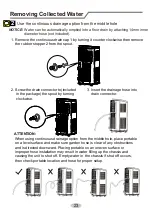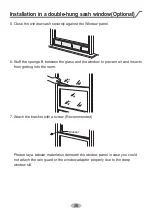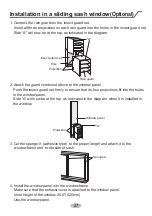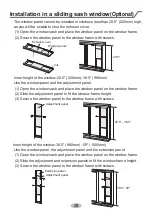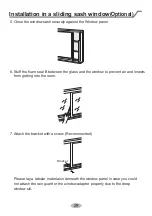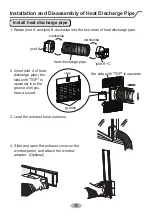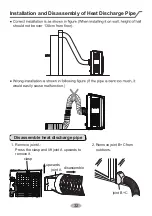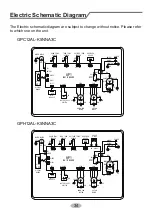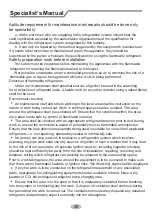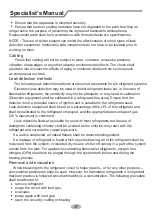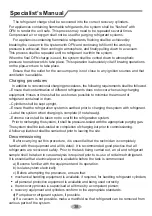
Ensure that the apparatus is mounted securely.
Ensure that seals or sealing materials have not degraded to the point that they no
longer serve the purpose of preventing the ingress of flammable atmospheres.
Replacement parts shall be in accordance with the manufacturer’s specifications.
Cabling
Removal and evacuation
Leak detection methods
NOTE : The use of silicon sealant can inhibit the effectiveness of some types of leak
detection equipment. Intrinsically safe components do not have to be isolated prior to
working on them.
Check that cabling will not be subject to wear, corrosion, excessive pressure,
vibration, sharp edges or any other adverse environmental effects. The check shall
also take into account the effects of aging or continual vibration from sources such
as compressors or fans.
The following leak detection methods are deemed acceptable for all refrigerant systems.
Leak detection fluids are suitable for use with most refrigerants but the use of
detergents containing chlorine shall be avoided as the chlorine may react with the
refrigerant and corrode the copper pipe-work.
If a leak is suspected, all naked flames shall be removed/extinguished.
remove refrigerant;
purge the circuit with inert gas;
evacuate;
purge again with inert gas;
open the circuit by cutting or brazing.
If a leakage of refrigerant is found which requires brazing, all of the refrigerant shall be
When breaking into the refrigerant circuit to make repairs – or for any other purpose –
conventional procedures shall be used. However, for flammable refrigerants it is important
that best practice is followed since flammability is a consideration. The following procedure
shall be adhered to:
recovered from the system, or isolated (by means of shut off valves) in a part of the system
remote from the leak. For appliances containing flammable refrigerants, oxygen free
nitrogen (OFN) shall then be purged through the system both before and during the
brazing process
Electronic leak detectors may be used to detect refrigerant leaks but, in the case of
flammable refrigerants, the sensitivity may not be adequate, or may need re-calibration.
(Detection equipment shall be calibrated in a refrigerant-free area.) Ensure that the
detector is not a potential source of ignition and is suitable for the refrigerant used.
Leak detection equipment shall be set at a percentage of the LFL of the refrigerant and
shall be calibrated to the refrigerant employed, and the appropriate percentage of gas
(25 % maximum) is confirmed.
37
Specialist’s Manual

